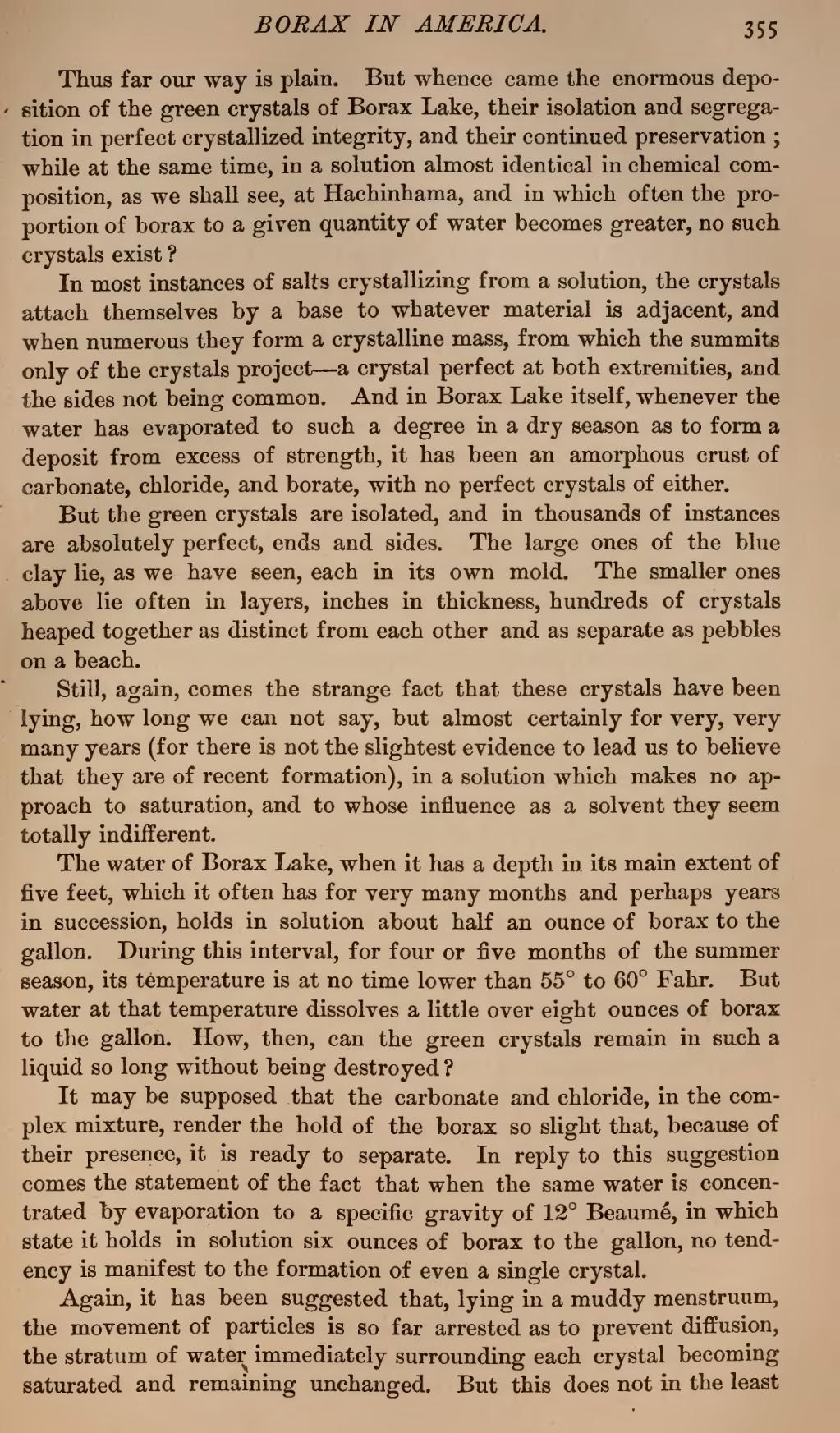Thus far our way is plain. But whence came the enormous deposition of the green crystals of Borax Lake, their isolation and segregation in perfect crystallized integrity, and their continued preservation; while at the same time, in a solution almost identical in chemical composition, as we shall see, at Hachinhama, and in which often the proportion of borax to a given quantity of water becomes greater, no such crystals exist?
In most instances of salts crystallizing from a solution, the crystals attach themselves by a base to whatever material is adjacent, and when numerous they form a crystalline mass, from which the summits only of the crystals project—a crystal perfect at both extremities, and the sides not being common. And in Borax Lake itself, whenever the water has evaporated to such a degree in a dry season as to form a deposit from excess of strength, it has been an amorphous crust of carbonate, chloride, and borate, with no perfect crystals of either.
But the green crystals are isolated, and in thousands of instances are absolutely perfect, ends and sides. The large ones of the blue clay lie, as we have seen, each in its own mold. The smaller ones above lie often in layers, inches in thickness, hundreds of crystals heaped together as distinct from each other and as separate as pebbles on a beach.
Still, again, comes the strange fact that these crystals have been lying, how long we can not say, but almost certainly for very, very many years (for there is not the slightest evidence to lead us to believe that they are of recent formation), in a solution which makes no approach to saturation, and to whose influence as a solvent they seem totally indifferent.
The water of Borax Lake, when it has a depth in its main extent of five feet, which it often has for very many months and perhaps years in succession, holds in solution about half an ounce of borax to the gallon. During this interval, for four or five months of the summer season, its temperature is at no time lower than 55° to 60° Fahr. But water at that temperature dissolves a little over eight ounces of borax to the gallon. How, then, can the green crystals remain in such a liquid so long without being destroyed?
It may be supposed that the carbonate and chloride, in the complex mixture, render the hold of the borax so slight that, because of their presence, it is ready to separate. In reply to this suggestion comes the statement of the fact that when the same water is concentrated by evaporation to a specific gravity of 12° Beaumé, in which state it holds in solution six ounces of borax to the gallon, no tendency is manifest to the formation of even a single crystal.
Again, it has been suggested that, lying in a muddy menstruum, the movement of particles is so far arrested as to prevent diffusion, the stratum of water immediately surrounding each crystal becoming saturated and remaining unchanged. But this does not in the least
